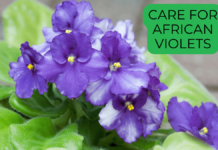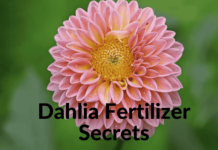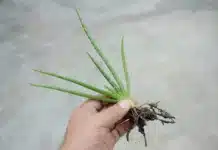Understanding Snow on Plant
Winter is fast approaching, and many gardeners start worrying about how snow will affect their plants. Snow has a surprising double nature—it can act as a natural insulator, protecting roots from freezing temperatures, but heavy or prolonged snowfall may harm delicate foliage and even snap branches. Knowing the effects of snow on your plants is the first step in learning how to protect them effectively.
My Take on Snow and Plants
Gardening in cold climates taught me snow isn’t just a threat—it’s a natural protector. With the right prep, plants survive winter’s harshness and thrive come spring.
How Effect Snow on Plant
Snow forms an insulating layer by trapping air between flakes, which helps keep soil temperatures steadier and protects roots. This is especially helpful for newly planted seeds and perennials. However, thick snow accumulation may weigh down branches, flatten shrubs, or cause damage to tender plants not suited for heavy snow. The key is understanding which plants in your garden are resilient and which need extra care.
Preparing Your Garden Before the First Snowfall
Pruning for Snow Resistance
One of the best ways to reduce snow damage is to prune weak or dead branches. This lessens the chance of breakage when snow piles up. Cleaning up fallen leaves and debris from beds also reduces risks of pests and diseases that thrive in cold, damp environments.
Mulching: Nature’s Winter Blanket
Apply a 2 to 3-inch layer of organic mulch around plant bases, trees, and shrubs. Mulch shields roots from temperature fluctuations and helps keep soil moist. Just be sure to leave a small gap between mulch and plant stems to avoid rot.
Watering Before Freeze
It might seem odd, but watering plants before the ground freezes can protect them. Moist soil holds heat better than dry soil, helping prevent frost from penetrating deeply. Just water early enough so the soil can absorb the moisture before freezing temperatures arrive.
Winter Care: Protecting Plants from Snow Damage
Covering Plants for Extra Shielding
When snow falls heavily, covering vulnerable plants is a practical solution. Use breathable materials like burlap, frost cloth, or even old bedsheets. Build a frame with stakes around plants, drape the material over it without touching the foliage, and secure the edges to prevent wind damage. Don’t forget to remove covers during sunny days for air circulation to avoid overheating.
Creating Snow Screens
For larger shrubs or clusters of plants, build simple teepee structures with wooden stakes and burlap to deflect snow and allow airflow. This keeps snow from piling directly on plants and minimizes damage.
Gently Removing Snow
If snow weighs down your plants, gently brush it off by sweeping upward with a broom or using your hands to avoid breaking branches. Removing excess snow prevents structural damage but be cautious not to harm the plants.
Special Tips for Container Plants
Moving Containers Indoors or Sheltered Areas
Potted plants are particularly vulnerable to cold and snow. Whenever possible, move them to a garage, porch, or shed to keep them safe from freezing temperatures and snow.
Insulating Stationary Pots
For heavy containers that can’t be moved, wrap pots with bubble wrap or burlap to insulate the roots and prevent pots from cracking in freezing weather.
Long-Term Strategies for Winter-Proof Gardens
Choose Cold-Hardy Plant Varieties
When planning your garden, select plants native to your climate or those known for cold tolerance. These hardy plants naturally withstand snow and harsh winter conditions.
Plant in Protected Locations
Place sensitive plants near buildings, fences, or larger plants to provide a natural barrier against snow and wind, reducing the risk of damage.
Build Permanent Winter Structures
In regions with heavy snowfall, consider constructing cold frames or small greenhouses to provide ongoing protection for delicate plants during winter.
Embracing Winter While Caring for Your Garden
Winter can be a season of rest and resilience for your garden. Many plants benefit from cold exposure, which strengthens them for spring growth. By following practical protective measures, your garden can thrive despite snow and freezing temperatures.
Additional Expert Tips for Snowy Seasons
- Water Evergreens Well: Dry cold winds can desiccate broadleaf evergreens, so ensure they are well-watered before freezing.
- Apply Protective Sprays: Products like Wilt Stop® help prevent leaf burn caused by cold winds.
- Prepare Outdoor Faucets: Remove hoses, cover faucets, and drain hoses to prevent winter damage.
- Monitor Snow on Evergreens: Remove heavy snow from branches only if they risk breaking; otherwise, snow acts as insulation.
- Feed the Birds: Snow can cover natural food sources, so providing bird feeders supports local wildlife.
Conclusion: Get Ready for Winter with Confidence
Protecting your plants from snow doesn’t have to be overwhelming. By pruning, mulching, watering wisely, and using simple covers, you create a winter shield for your garden. Remember, snow can be both friend and foe. Use these tips to make sure your garden flourishes, no matter how frosty the season.


























